When you move into a new place, whether it’s an apartment or a house, hanging curtains should be one of your first décor priorities. The content of this article will show you the different types and benefits of curtains, as well as how to hang curtains.
Benefits of Hanging Curtains
Curtains have a wide array of benefits for a home. Here are the five most significant benefits of hanging curtains.
Light Filtration
The first benefit is obviously light filtration. If natural sunlight is important to you, you will want to know the four different types of curtains before going out and buying a new set. Here are the four main types of curtains:
- Light-Filtering Curtains:
These curtains are a thin fabric that hangs over a window. As the name suggests, they merely filter light, allowing a considerate amount of light to enter. Light-filtering curtains are also referred to as sheer curtains. These look great because they are typically light-colored and cheaper than some of the other curtain options. - Room Darkening Curtains:
These curtains are a bit heavier than the thinner, sheer curtains. They are an excellent choice for the person who wants to ensure privacy and block light from entering. Some people want to darken their space, but they aren’t fond of complete darkness. They are more expensive than the sheer curtains but cheaper than the following two options. - Blackout Curtains:
Blackout curtains are meant for making a room pitch black. With these curtains, a room will feel like a cave. Blackout curtains block out 100% of any incoming light. - Insulated Curtains:
Insulated curtains are similar to blackout curtains, but they add some extra benefits that I will get to in a minute. This type of curtain is by far the most expensive.
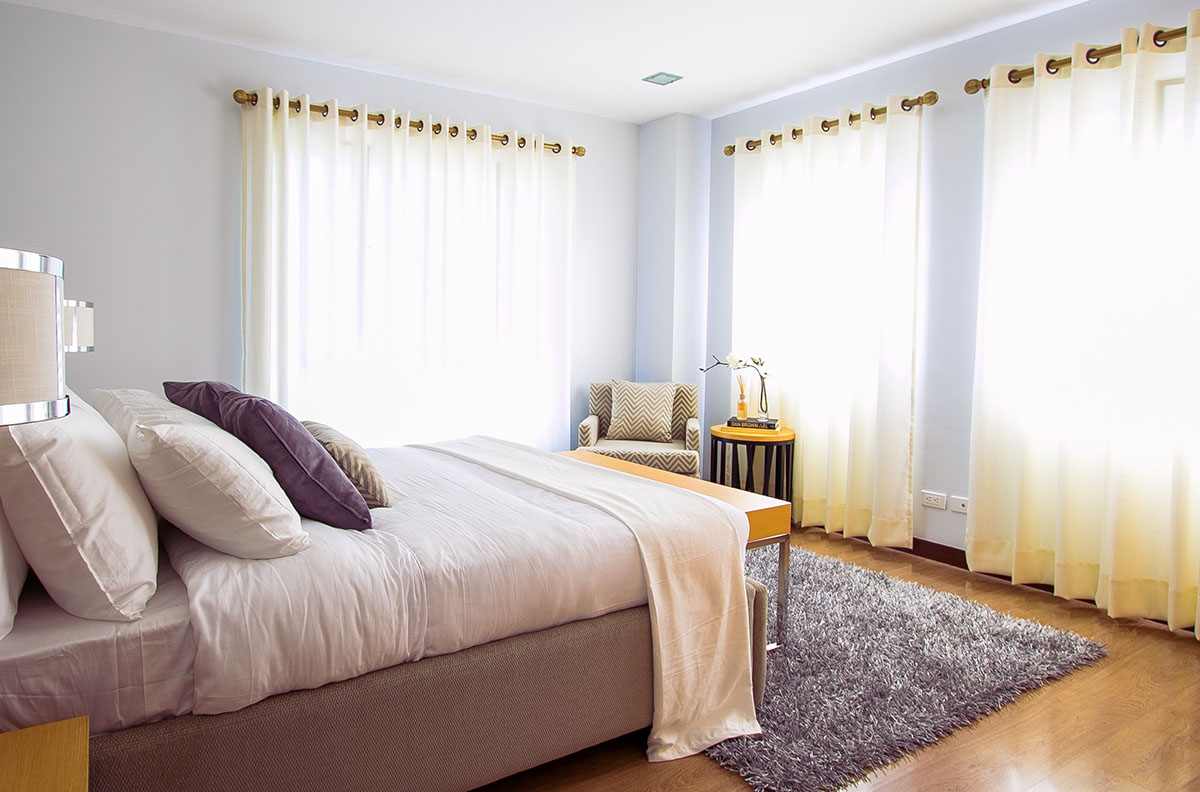
Many people will combine sheer curtains with darkening, blackout, or insulated curtains to create overlapping curtains. Hanging overlapping curtains is a dual-layer curtain system that gives people the option of blackout or light-filtering. Overlapping curtains also provide a modern design when used correctly.
Privacy
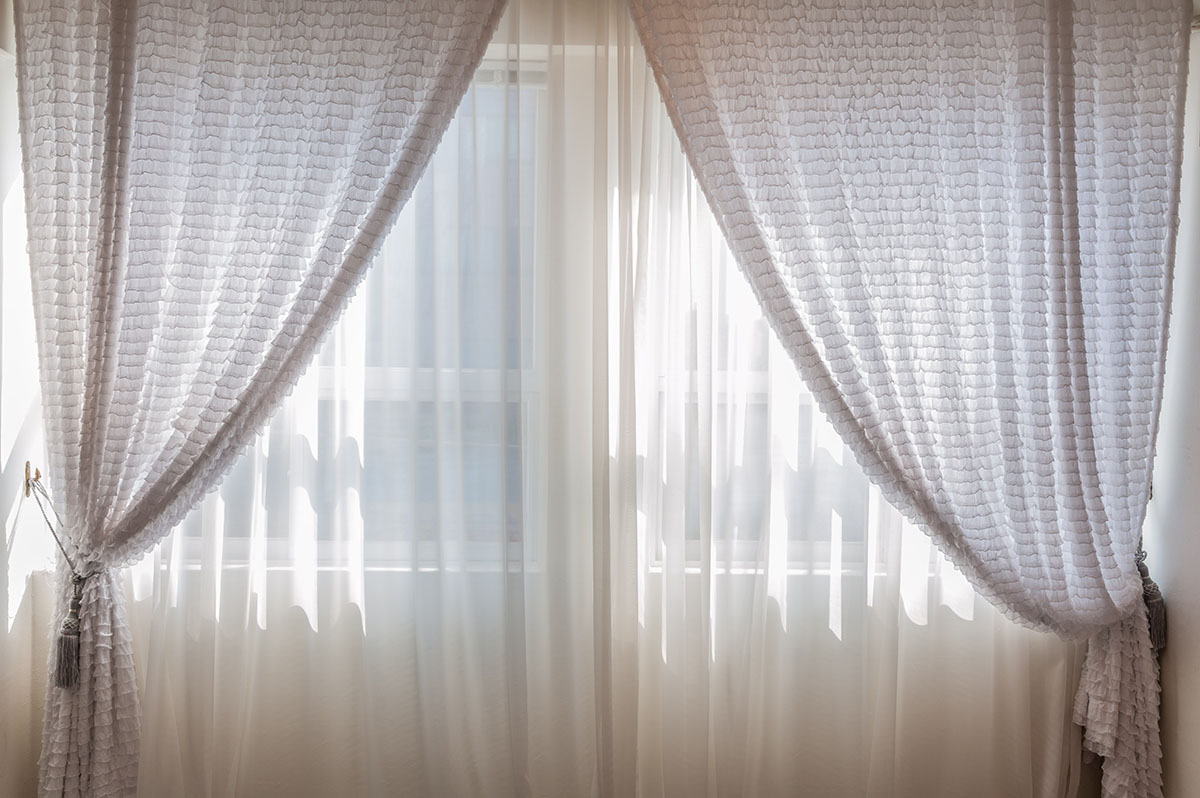
The second benefit is privacy. People want the ability to close their curtains and give their room privacy. Blinds only grant about 80% privacy. Adding curtains on top of shades guarantees privacy for the residents. Along with light, privacy only increases with the thickness of curtains. Sheer curtains don’t ensure the type of privacy that the other curtain types can provide.
Energy Savings
The third benefit that curtains can have is energy savings. When you save energy, you save money. Blackout and insulated curtains both serve as insulators against drafts and temperature changes that windows can cause.
During the summer months, sunlight shines and heats up the room. It can drive your energy prices way up if your air conditioner is continuously running. During the winter, the cold air brings down the temperature and drives up your bill. Thicker curtains keep your unnecessary energy expenses down.
Furniture Protection
The fourth benefit is for protecting your furniture. Overexposure to sunlight can cause your furniture to fade or crack over time. Curtains provide protection against the UV rays that can be harmful to your favorite furniture.
Design and Decoration
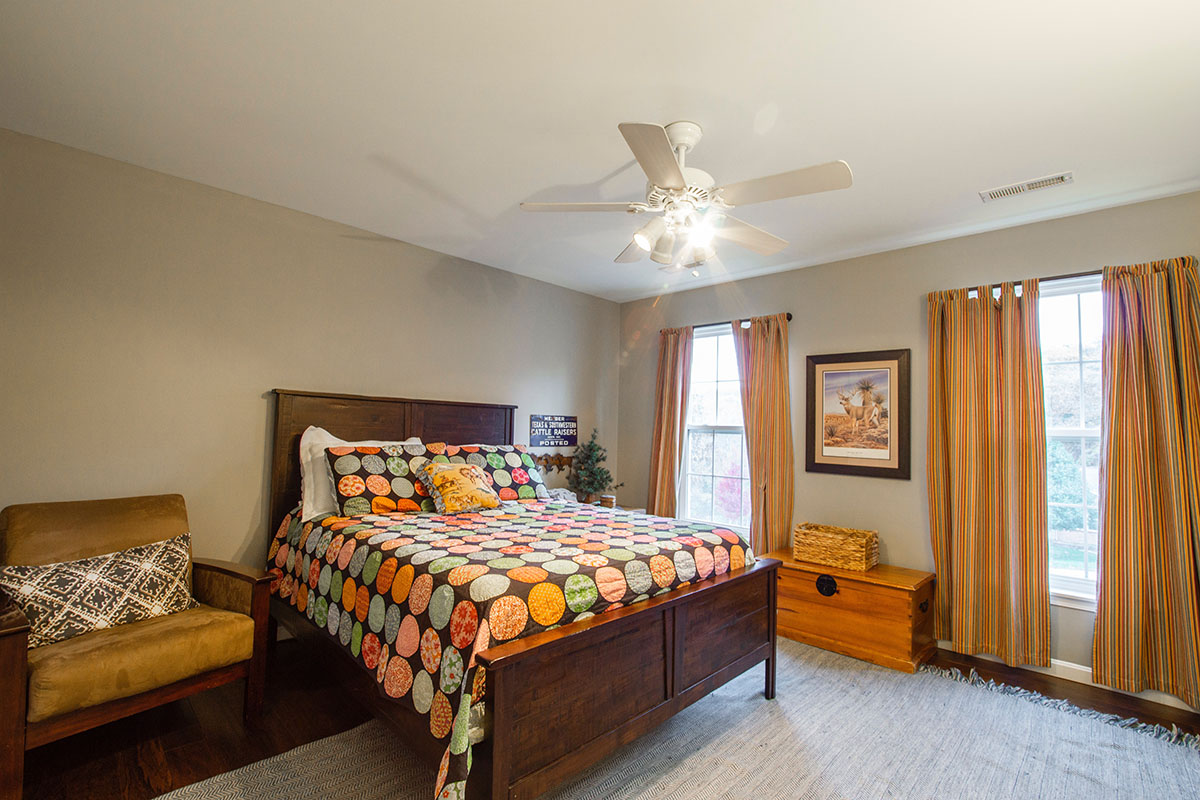
The fifth benefit has to do with the design of your home. Curtains can bring out the character of a room. By playing with the color, pattern, and fabric, you can create a space that is your own with the ultimate compliment piece. Most places are designed with a particular color palette in mind. Curtains are one of the larger pieces in a room, and they are obscure enough to be bold. The right curtains complete the aesthetic of a space.
While those five benefits all have their place, the most common reasons someone will hang curtains is for light and privacy.
I created an instructional video on how to hang curtains. With the proper tools, any type of curtain with the average curtain rod can be attached in under thirty minutes.
How to Hang Curtains
First of all, you need to have the right supplies. You’ll need:
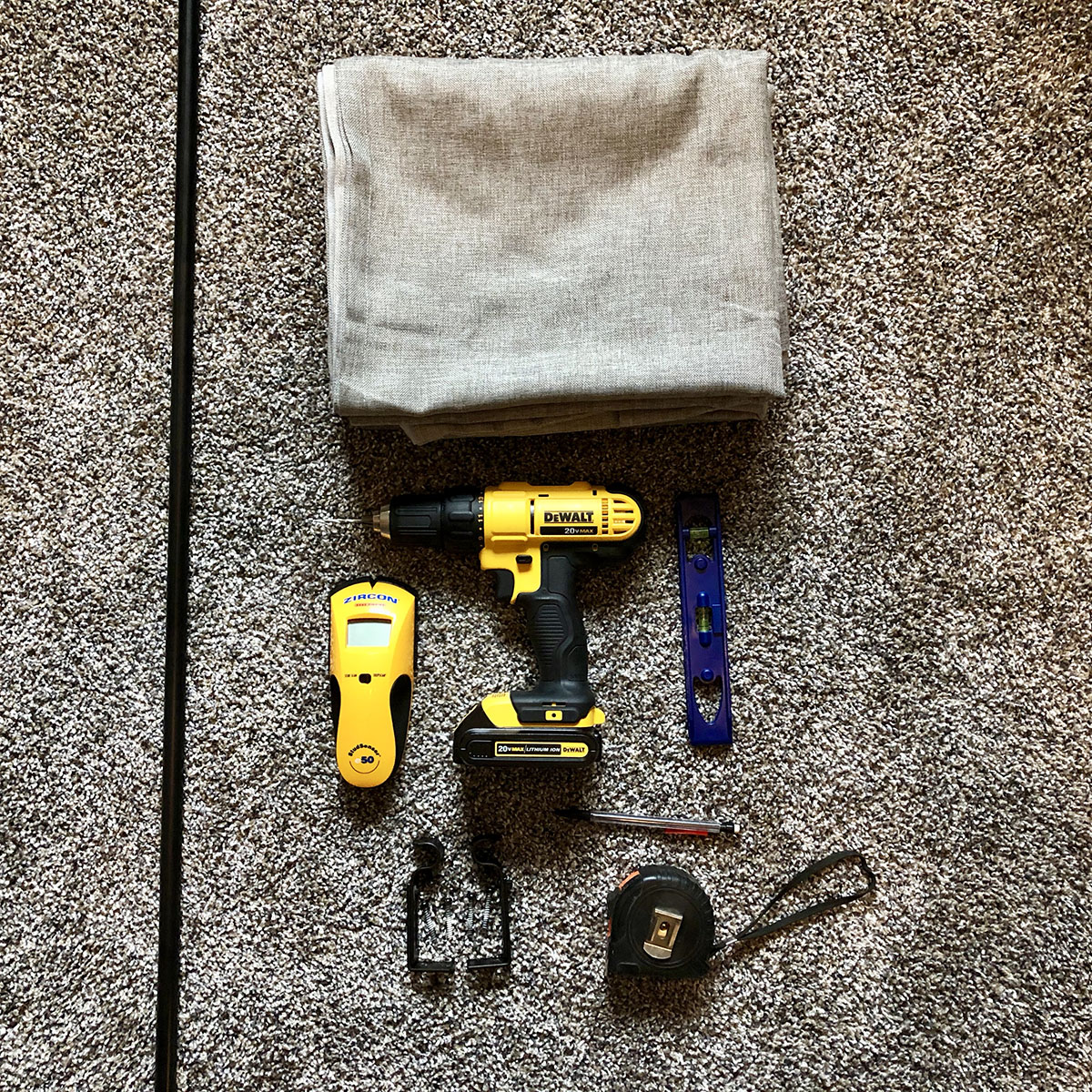
- Curtain and Curtain Rod
- Drill
- Wall Screws
- Tape Measure
- Level
- Pencil
- Screwdriver
- Stud finder (optional)
- If you don’t have an electric drill, you can use hand-screw drywall anchors
I only suggest using drywall anchors if you are going to double up and use overlapping curtains. Hanging blackout curtains is the same as hanging sheer curtains.
Step 1)
First, you’ll want to determine how high to hang the curtains. You can do this two ways. The first way is by measuring the curtains and marking the top. The second way is by attaching the curtain to the rod and holding the rod against the wall.
How high you hang curtains is your personal preference. It doesn’t matter how far off the ground the curtain hangs. As long as the drape covers the entire window and isn’t dragging on the ground.
Step 2)
Determine where you want your wall brackets to be placed. The location of the wall brackets should be at least 4-6 inches from the edge of the window frame or door frame. The width of your curtains should extend beyond the frame by a marginal amount.
Step 3)
Before you begin this step, you should use a stud finder to double check for studs or electrical wiring. You don’t need studs, but if they are there, you might as well use them.
If you have a drill, take one of your wall brackets and mark a hole for where the top screw will go. Drill your hole and insert your screw. Before you tighten it, take your bubble and make sure you have it level. Once it’s level, mark your second hole and do the same thing.
Once that’s done, repeat the process on the other side. Double check your measurements and use your level to guarantee you are getting a level rod.
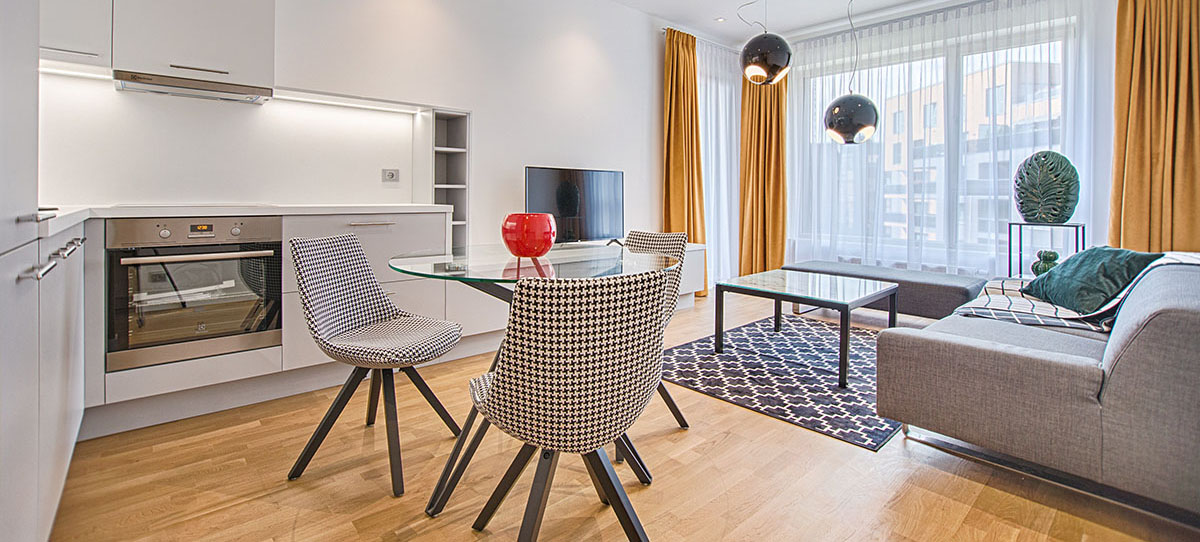
Step 4)
Finish assembling your wall brackets and attach your rod. When you connect your rod, use your level one more time to ensure nothing is lopsided. If everything looks okay, pat yourself on the back.
If you have decided to go with the overlapping curtains, place the sheer curtains closest to the window, then attach the thicker curtains in front of those. You can add wall hooks or decorative rope to tie back the thicker curtains and display both sets creatively.
Hanging curtains is another one of those projects that seems daunting to DIY. Even an amateur DIYer can hang curtains with these instructions. If you still don’t feel comfortable with this project, schedule a Lula approved handyman to come out and hang your curtains for you. If you have any questions, feel free to leave a comment.
Anything found written in this article was written solely for informational purposes. We advise that you receive professional advice if you plan to move forward with any of the information found. You agree that neither Lula or the author are liable for any damages that arise from the use of the information found within this article

I love that you talked about the energy saved by hanging curtains because during the summer they can block out the sun. I live in a very hot environment and I am looking for ways to not use my AC unit as much. Both for money saving purposes, and to help the environment. I will certainly remember the tips on this page while I am looking to purchase curtains.
Thanks, Brendan. You’ll be surprised by the insulation that a thick set of curtains will provide!